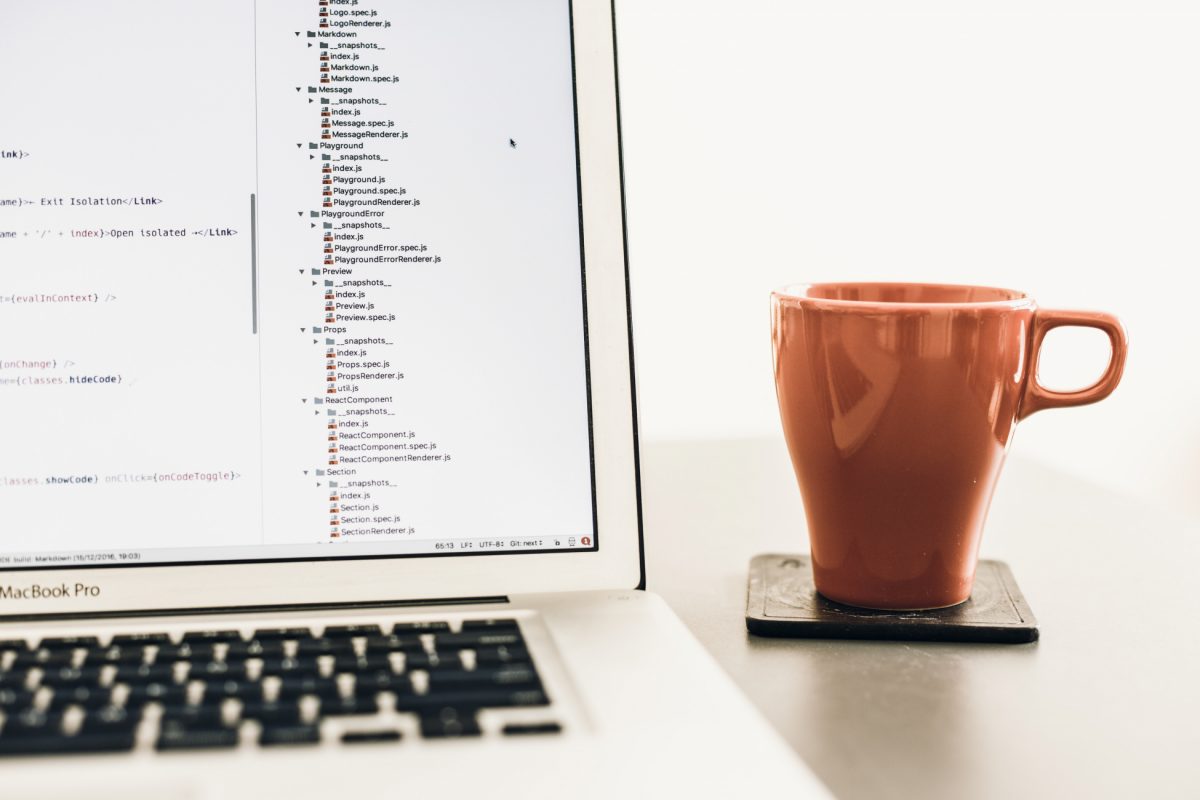Ever felt like your mortgage is holding you hostage with an unwanted guest that just won't leave? Enter PMI, or Private Mortgage Insurance, the financial accessory you never asked for—kind of like that extra topping on your pizza that ruins the flavor. But what if you could kick PMI to the curb and save some serious cash? Whether you're a millennial hustling for financial freedom or a Gen Z dreamer setting the stage for future wealth, this guide is here to turn the tables on pesky PMI. Buckle up as we take you on an engaging, humorous, and totally relatable journey through the ins and outs of removing PMI from your mortgage.
How to Remove PMI From Mortgage Table of Contents
Understanding PMI: Demystifying Private Mortgage Insurance
Why is PMI Required and When Can You Remove It?
Strategies to Remove PMI Early: Smart Financial Moves
Refinancing for PMI Removal: Is It Right for You?
How to Appeal for PMI Removal: Tips and Tricks
The Role of Home Appraisals and Market Trends
Digital Tools and Tech-Savvy Solutions for Mortgage Management
Pitfalls and Myths: Don’t Get Tricked by PMI Misinformation
Resources and Community Support: Your Next Steps
Frequently Asked Questions: How to Remove PMI From Mortgage?
Understanding PMI: Demystifying Private Mortgage Insurance
Let’s start with the basics because nothing ruins a good plan like confusion. Private Mortgage Insurance (PMI) is an insurance policy that protects lenders in case you default on your loan. In simpler terms, it’s like a financial safety net for your bank rather than for you. Lenders require PMI when your down payment is less than 20% of your home's purchase price. And while it might seem like an annoying extra expense, PMI enables you to buy your home sooner—if you can stomach the monthly payments.
Although it can feel like an unnecessary deduction from your paycheck, it's important to understand that PMI is temporary. Once you build enough equity in your home, you can typically have it removed, leading to significant monthly savings and more money in your pocket for things like avocado toast or spontaneous weekend getaways.
In this section, we're going to break down what PMI is, why it's required, and why it can be a temporary nuisance rather than a permanent burden on your finances. Plus, we’ll provide you with some insider knowledge on how mortgage companies see PMI—and how you can beat the system.
Why is PMI Required and When Can You Remove It?
PMI exists because lenders like a backup plan. If you slip—even if only once—the lender needs assurance that they won’t lose their hard-earned cash if you decide to walk away. Hence, PMI is added to your monthly mortgage payment as a type of insurance premium. However, here’s the silver lining: once your home equity crosses a certain threshold, often 20%, you have the right to request that PMI be removed.
Now, let’s get into the nitty-gritty. When you get your home, if your down payment was less than 20%, PMI is automatically added into the mix to mitigate the lender’s risk. But good news: PMI isn’t forever. Typically, when your principal balance drops to 80% of the original value of your home, you can request its cancellation. Alternatively, if your home’s market value increases, reaching a point where your loan-to-value ratio (LTV) is 80% or less, you might also qualify for PMI cancellation.
Just imagine, as you whittle down your mortgage balance or as market trends work in your favor, your monthly budget gets a breather. And if you’re proactive about managing your equity, removing PMI is only a matter of time. Throughout the rest of this guide, we’ll walk you through strategies to get there faster.
Strategies to Remove PMI Early: Smart Financial Moves
If removing PMI seems as elusive as the perfect meme going viral, fear not—there's hope yet. Removing PMI before you hit the 20% threshold might require a bit of financial savvy, creativity, and diligence. Let’s explore some clever strategies that can accelerate your journey toward PMI freedom.
First up, consider making extra payments toward your principal. This simple tactic not only chips away at your mortgage balance but also speeds up the reduction of your LTV ratio. Think of it as giving your mortgage a slim chance to get leaner. Even small amounts can make a big difference over time.
Next, pay close attention to your home's market value. If property values in your area are on the rise, it might be time to request a professional appraisal. A higher home appraisal can work in your favor by boosting your home equity and potentially qualifying you for early PMI cancellation. Tools like online property assessments and digital appraisal services make it easier than ever to stay on top of these trends.
Another strategy is refinancing. Refinancing your mortgage can sometimes allow you to eliminate PMI altogether, especially if your home's value has appreciated or if you’ve built up significant equity. Just be sure to weigh the costs of refinancing (closing costs can be a buzzkill) against the long-term savings you’ll get without PMI.
And while it might be tempting to ignore PMI as just another monthly expense, these tips remind you that there are proactive measures you can take. A little extra cash in your principal payments, combined with savvy market knowledge and a readiness to refinance when the time is right, can help you kiss PMI goodbye sooner than you ever imagined.
Refinancing for PMI Removal: Is It Right for You?
Refinancing might sound like a big, scary word—sort of like "adulting"—but in the realm of mortgages, it’s a powerful tool to help remove PMI from your monthly bills. Essentially, refinancing means replacing your existing mortgage with a new one, often at a better interest rate or with different terms. One reason people consider refinancing is to eliminate PMI altogether.
How does this work? If your home has appreciated in value or if you've been diligently paying down your mortgage, the new appraisal might reveal that your loan-to-value ratio drops below 80%. This, in turn, enables you to qualify for a new loan that doesn’t come with the pesky PMI charge. In some cases, refinancing can also lower your interest rate, saving you money in the long run.
But here’s the catch: refinancing isn’t a one-size-fits-all solution. There are costs involved, such as closing fees, which can add up and may offset your PMI savings if not carefully considered. It’s crucial to crunch the numbers or even consult with a mortgage professional to determine if refinancing is truly the best move for your financial situation.
In a nutshell, refinancing is like a financial makeover for your mortgage. When done right, it not only helps remove PMI but also potentially secures a lower interest rate that keeps more money in your wallet. For millennials and Gen Zers navigating the maze of financial decisions, this alternative can be a game-changer—provided you plan carefully and understand the costs involved.
How to Appeal for PMI Removal: Tips and Tricks
So, you’ve been diligently paying down your mortgage, and you think it’s time to ditch PMI. But what if your lender isn’t making the process as smooth as ordering your favorite takeout? You might need to appeal directly for its removal. Here are some practical tips and tricks for making your case successfully.
First, gather all your documentation. You’ll need proof of the current value of your home in the form of a recent appraisal, evidence of your mortgage balance, and any other financial information that supports your case. Think of it as assembling the ultimate “financial glow-up” portfolio.
Next, contact your lender. It might seem intimidating to call up the institution holding your mortgage, but remember—they’re just people trying to manage risk. Politely request an appraisal review or an evaluation of your current equity status. If your numbers stack up to show 20% or more equity, insist on having your PMI removed.
If you meet resistance, don’t be discouraged. Ask for specific reasons why they’re denying your request and find out if there are alternative pathways. In some cases, maintaining the same mortgage with a higher equity ratio—as evidenced by an updated appraisal—can force the lender’s hand.
Additionally, consider enlisting the help of a mortgage broker or financial advisor. These pros know the ins and outs of the system and can often intercede on your behalf with better chances of success. They might even have insider tips on how to negotiate terms that seem non-negotiable.
Finally, keep persistence in your back pocket. The appeal process can be a bit like dating—it sometimes takes a few tries before you find your perfect match. Document your conversations, follow up regularly, and let your lender know that you’re well-informed and serious about your financial future.
The Role of Home Appraisals and Market Trends
Understanding the role of home appraisals can be a game-changer in your quest to remove PMI. An appraisal evaluates the current market value of your property, and if that number is high enough, it can be your ticket out of PMI. For many homeowners, the key to early PMI cancellation lies in leveraging favorable market trends and updated appraisals.
Imagine your home as a living, breathing asset whose value can change with the times. In a booming real estate market, your property's value might have increased significantly since your purchase. This appreciation can justify a new appraisal, confirming that your loan-to-value ratio has dipped below the critical 80% threshold.
However, timing is everything. The real estate market can be unpredictable, much like the wild ride of social media trends. That’s why staying informed about your local market conditions is crucial. Use online resources, speak with local realtors, and track housing reports to understand when might be the best time to request a new appraisal.
Moreover, if you suspect that your home’s value has risen substantially, it might be worthwhile to invest in a professional appraisal rather than relying on automated estimates. The investment could pay off by showing your lender that you’ve met the criteria for PMI removal.
In short, a solid appraisal coupled with favorable market trends can significantly bolster your case for ditching PMI. Treat your home appraisal as an essential part of your financial toolkit—one that could ultimately save you hundreds or even thousands of dollars each month.
Digital Tools and Tech-Savvy Solutions for Mortgage Management
If you’re a digital native, there’s no doubt you love leveraging technology to streamline your life. The realm of mortgage management is no exception. There are a host of digital tools and apps designed to simplify tracking your mortgage balance, monitor your home equity, and alert you when it’s time to consider removing PMI.
For starters, many banks and mortgage lenders now offer robust online portals and mobile apps that provide real-time updates about your loan. These platforms can be used to monitor your current balance, view past payments, and even simulate future scenarios where extra payments could lead to PMI cancellation earlier than expected.
In addition, there are several third-party apps that can help you crunch the numbers. Tools like mortgage calculators, equity tracking apps, and financial planning platforms allow you to play with different scenarios—what happens if you pay an extra $100 a month, or what if your home appreciates by 5%? By using these tools, you can plan strategically to get ahead of PMI.
And let’s not forget the power of community forums and social media groups. Online communities filled with savvy homeowners and financial enthusiasts can offer advice, share experiences, and recommend digital tools based on personal success stories. These platforms can provide insights into the best apps, the most helpful calculators, and even tips on negotiating with your lender.
In this tech-driven era, using digital tools is like having a financial sidekick on your journey to PMI freedom. They empower you to make data-driven decisions, track your progress in real time, and stay ahead of any changes that could save you money.
Financial Planning & Budgeting: Building Equity Faster
One of the surest ways to remove PMI from your mortgage is by accelerating the pace at which you build equity. And guess what? Smart financial planning and budgeting can be your secret weapons in this race. Not only does a meticulous budget help you save for unexpected expenses, but it also frees up extra cash that you can throw directly at your mortgage principal.
Start by taking a critical look at your monthly budget—identify areas where you might be overspending, whether it's subscription services, dining out, or that extra latte you pick up every morning. Redirect those funds to your mortgage payment, and watch your principal decrease faster. Every extra dollar brings you one step closer to an 80% loan-to-value ratio where PMI becomes a thing of the past.
Additionally, consider setting short-term and long-term financial goals. Whether it's a side hustle, a savings challenge, or simply cutting back on non-essential expenses, every effort counts. Creating a plan that prioritizes mortgage repayment can also bring peace of mind—after all, there’s nothing more satisfying than watching your home equity grow.
It might also help to automate your extra mortgage payments. Set up automatic transfers on payday, so you never miss an opportunity to chip away at that balance. Consistency is key, and having a structured strategy not only expedites PMI removal but also cultivates a healthy financial discipline for the future.
Remember, building equity is a marathon, not a sprint. With the right budgeting and planning, you can create a solid financial foundation that makes the removal of PMI not just a possibility, but an inevitable step toward true homeownership freedom.
Pitfalls and Myths: Don’t Get Tricked by PMI Misinformation
The world of mortgages is riddled with myths and misconceptions, especially when it comes to PMI. Rumors abound—some say you need a sky-high credit score to remove PMI early, others claim that refinancing is the only way out. It can be overwhelming and downright frustrating to sort through all the misinformation.
One common myth is that PMI removal is automatic once you hit the 20% threshold. While many lenders do cancel PMI automatically when your balance reaches 78% of the original loan balance, others require you to take the initiative. So, don’t just sit back and hope for a miracle—reach out to your lender to know your options.
Another misconception is that PMI is a permanent feature of your mortgage. Nothing could be further from the truth. PMI is designed as a temporary measure, and once you've built enough equity, you have every right to have it removed. The key is staying informed and proactive.
There’s also a myth that making extra mortgage payments always results in early PMI cancellation. While paying extra can indeed boost your equity, it must be applied directly to the principal. Make sure your lender clearly outlines how additional payments are credited to your loan balance.
Lastly, beware of scams and misleading offers that promise a quick fix for PMI removal. Always double-check with trusted financial advisors or your lender directly. In the end, avoiding these pitfalls is all about arming yourself with accurate, up-to-date information and trusting in proven financial strategies.
Resources and Community Support: Your Next Steps
Navigating the process of removing PMI can feel like trying to decode an ancient treasure map—complex and sometimes frustrating. But you’re not alone in this quest. There are plenty of resources and communities out there to support you. Whether you’re looking for expert advice from mortgage professionals, insights from online forums, or even podcasts that break down the latest financial trends, a wealth of information is at your fingertips.
Start by exploring reputable financial websites and blogs that offer mortgage calculators, market analysis, and detailed guides. For instance, many personal finance websites publish comprehensive articles about building equity, refinancing, and navigating PMI removal. These resources can help you better understand the mechanics of your mortgage and give you actionable tips.
Don’t hesitate to tap into the power of your network. Social media platforms like Reddit, Facebook groups, and even Twitter threads can provide priceless peer advice and success stories from fellow homeowners who’ve successfully removed PMI. Sharing your own journey and discovering the experiences of others not only keeps you motivated but also offers new perspectives and potential strategies you might not have considered.
And finally, consider seeking professional advice from a mortgage broker or financial planner. These experts can offer a personalized look at your situation and guide you through the process with tailored recommendations. Whether it’s scheduling that essential appraisal, negotiating with your lender, or simply reworking your monthly budget, professional guidance can transform that confusing maze into a clear path forward.
Your next steps? Educate yourself, connect with others, and take action. Every step you take towards eliminating PMI from your mortgage is a step towards greater financial freedom and the realization of your long-term goals. Embrace the journey, equip yourself with knowledge, and watch as those extra dollars make their way back into your monthly budget.
Frequently Asked Questions: How to Remove PMI From Mortgage?
Here are some frequently asked questions that address common concerns about removing PMI from your mortgage:
1. What exactly is PMI and why is it required?
PMI, or Private Mortgage Insurance, is a type of insurance that protects lenders in case you default on your loan. It is typically required if your down payment is less than 20% of the home’s purchase price, serving as a financial safeguard for the lender.
2. When can I request to remove PMI?
Typically, you can request removal of PMI once your mortgage balance reaches 80% of the original home value, or when your home has appreciated enough that your loan-to-value ratio drops below 80%. Some lenders may automatically cancel PMI when the balance reaches 78%, so check your loan documents for specifics.
3. How can making extra payments help in removing PMI?
Extra payments directly lower your principal balance, which in turn accelerates your progress toward the required 20% equity threshold. Even small additional amounts can make a difference over time.
4. Is refinancing a good option for eliminating PMI?
Refinancing can be an excellent option if your home has appreciated or if you’ve built sufficient equity. It might allow you to secure a new mortgage without the need for PMI, especially if the new appraisal confirms a loan-to-value ratio of 80% or lower.
5. Can I request that my lender removes PMI even before reaching 20% equity?
In some cases, yes. If your home’s market value has increased significantly or if you can show a strong financial history, you may be able to appeal to your lender for early cancellation. It’s essential to have proper documentation like a recent appraisal to support your request.
6. What role do home appraisals play in PMI removal?
A professional home appraisal can show that your property’s current market value is higher than its original purchase price. This updated value can lower your effective loan-to-value ratio and potentially qualify you for PMI removal.
7. Are there any risks associated with refinancing just to remove PMI?
Refinancing does come with closing costs and fees, which may offset some of the savings from removing PMI. It’s important to do a cost-benefit analysis and consult with a financial advisor to ensure that refinancing is the right move for you.
8. How can digital tools assist in managing my mortgage and PMI removal?
Online mortgage calculators, equity tracking apps, and digital loan management portals help you monitor your loan balance, simulate extra payments, and determine the best time to request PMI cancellation or refinance your mortgage.
9. What should I do if my lender denies my PMI removal request?
If your request is denied, ask for a detailed explanation and what additional requirements you need to meet. You may also consider seeking assistance from a mortgage broker or financial advisor, or reapplying after further reducing your principal balance.
10. Where can I find more support and resources on this topic?
Plenty of reputable financial websites, online forums, and social media groups are dedicated to mortgage management and PMI removal strategies. Additionally, consulting with mortgage professionals can provide you with personalized guidance.
Your Journey to Mortgage Freedom: Embrace the PMI-Free Life
Now that you’re armed with actionable steps, insider tips, and a holistic strategy for managing your mortgage, it’s time to take charge of your financial future. Removing PMI isn’t just a method to save money—it’s a signal that you’ve mastered a fundamental aspect of homeownership that countless others struggle with.
Think of your journey to a PMI-free mortgage as a personal empowerment movement. Every extra payment, every strategic appraisal, every moment spent crunching numbers rather than scrolling endlessly through your feed, is a step towards financial independence. As you embark on this journey, remember that eliminating PMI is an investment in your future—making your monthly budget leaner and offering you the freedom to allocate funds towards your passions, adventures, and long-term dreams.
Embrace the process with the enthusiasm of a millennial chasing the next big thing and the savvy of a Gen Z who knows the true value of every dollar. Stay proactive, educate yourself continuously, and network with experts who share your goal of breaking free from unnecessary financial burdens.
By understanding the mechanics of PMI, leveraging digital tools, and adopting smart financial habits, you’re well on your way to not just removing PMI, but reclaiming control of your homeownership journey. Celebrate every milestone along the way, and let your newfound financial independence inspire you to explore even greater opportunities.
Remember, your mortgage story is uniquely yours—a blend of challenges and triumphs that shape who you are as a homeowner and a money-savvy individual. Now is the perfect time to use that knowledge to create a brighter, PMI-free future. So, go ahead—take control, make informed decisions, and watch as you liberate your finances one step at a time.













